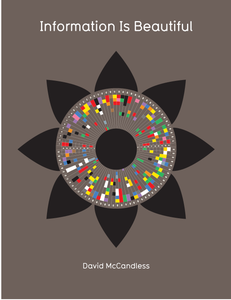Recently Media magazine reported on the market for
luxury watches in China. The prospects are good: “Having a Swiss-made watch
clasped around one’s wrist is a talisman of attainment for Chinese men. ‘A
watch is a must,’ says Sandy Chen, research director, TNS China. ‘When buying
up, they start with a luxury watch, next comes the luxury car, and last is the
luxury apartment. Men compare and discuss watches, and they need a watch of a
certain quality to be part of the social circle.’” The most aspirational brand
in this very aspirational market? Rolex. Apparently, if you want to demonstrate
your success in the world’s second largest (and soon to be largest) economy,
then nothing beats a Rolex watch. This is good news for luxury goods
manufacturers in general, and for Rolex SA in particular, at a time when the
European market for luxury goods looks like stagnating in the face of poor
prospects for long-term growth. The fast-growing Asian economies are showing a
craving for the very best brands that Europe can offer.
One branding expert claims that “If there were a
fight to be the perfect brand, Rolex could be the heavyweight titleholder”.
After all, the simple function of telling the time can be served extremely well
by more or less any watch costing more than a few Euros these days. More
complex functions can be delivered by, say, a watch from one of those solid and
dependable brands Timex or Casio. For around €50 you can more or less carry a
multi-function computer on your wrist that will tell you the time in several
time zones, light up at night, and capture multiple lap times on your jog round
the park. Agreed, there are some people who will not find these utilitarian
products all that attractive, but for the style conscious there are the
ubiquitous and stylish Swatch products, which, again for a very reasonable
price, you can own in psychedelic colours, fluorescent shades, or adorned with
your favourite cartoon character. For no more than two hundred Euros you can,
if you desire, own several watches to meet more or less every purpose – sport,
leisure, evening wear, work, travel, swimming … you name it. Clearly, a Rolex
is delivering something very special to its owner, something that has nothing
to do with accurate time-keeping or even aesthetic appeal (which is not to deny
that a Rolex is generally very easy on the eye).
An economist would tell you that the unique charm of
a Rolex is that it is a ‘position good’. That is to say that its most important
purpose is not utilitarian but to assert the social position of the wearer.
Human beings are social animals with a strong sense of hierarchy, and one of
the psychological forces driving them to work harder and to achieve more is the
desire to attain social status. What better way to assert social status, and to
demonstrate material success, than by carrying round on one’s wrist a product
costing €10,000 whose essential functions are undifferentiable from those of a
product costing €50? That’s €50 to be able to tell what time it is, and €9,950
to show that the owner belongs to a highly exclusive social category. A
marketer might explain this using Maslow’s hierarchy of needs (see chapter 5).
We can reasonably suppose that the basic, physiological needs of a Rolex owner
have been met. Owning a Rolex, however, clearly contributes to the satisfaction
of esteem needs, and simultaneously to the social need to be seen to belong to
a valued peer group.
Let’s make no mistake about it; a Rolex is a
fabulous example of the Swiss watchmaker’s art. The original company was founded
by Hans Wilsdorf in 1905, with the trademark Rolex registered in 1908. Rolex
has to its credit several important advances in watch technology: the first
waterproof watch (publicized in a swim across the English Channel in 1927), the
first date-adjusting watch, and the original diver’s watch – the Rolex
Sea-Dweller, released in 1967, was certified down to depths of 1,220
metres. Rolex watches were used by
members of the expedition on the first successful ascent of Mount Everest in
1953.
Naturally, Rolex is very careful about the kind of
people and events with which it associates its brand. Not just any sporting or
cultural event, nor just any sportsman or woman, meets the demanding Rolex
standards. In tennis, think the Wimbledon Championships and all-time great
Roger Federer, while in the arts think the Teatro alla Scalla in Milan and
superstar ballerina Sylvie Guillem. Rolex associates its brand with the most
successful people and the most successful events in the cultural and sporting
worlds, and carefully selects the type of sporting and cultural event to
reflect the preferences, and above all the aspirations, of the highly
motivated, driven and successful people who are in the target market. Above
all, the message is exclusivity. The Rolex brand is associated with exceptional
people and events; the brand epitomizes European, and particularly Swiss,
tradition, precision and excellence. For the expenditure of a mere few thousand
Euros you can buy yourself a small piece of this exclusivity, and you can establish
yourself as a member of this most sought-after club. Now, when you think of it
that way, it’s not really an expensive watch at all, is it?
Sources: Glen Smith, “Luxury watches find booming
market in China”, Media, September 10th
2009; David Taylor, “Rolex watches: A timeless example of building a brand
champion”, Central Penn Business Journal,
December 3rd 2010, available from www.centralpennbusiness.com,
accessed April 15th 2011; John E. Brozek, “Everest: A pinnacle of
achievement for Rolex”, International
Watch, April 2004;Company Profile:
Compagnie Financiere Richemont AG, Datamonitor, 2010; further information
obtained from www.rolex.com,
from www.sylvieguillem.com,
and from www.rogerfederer.com,
accessed April 15th 2011.















